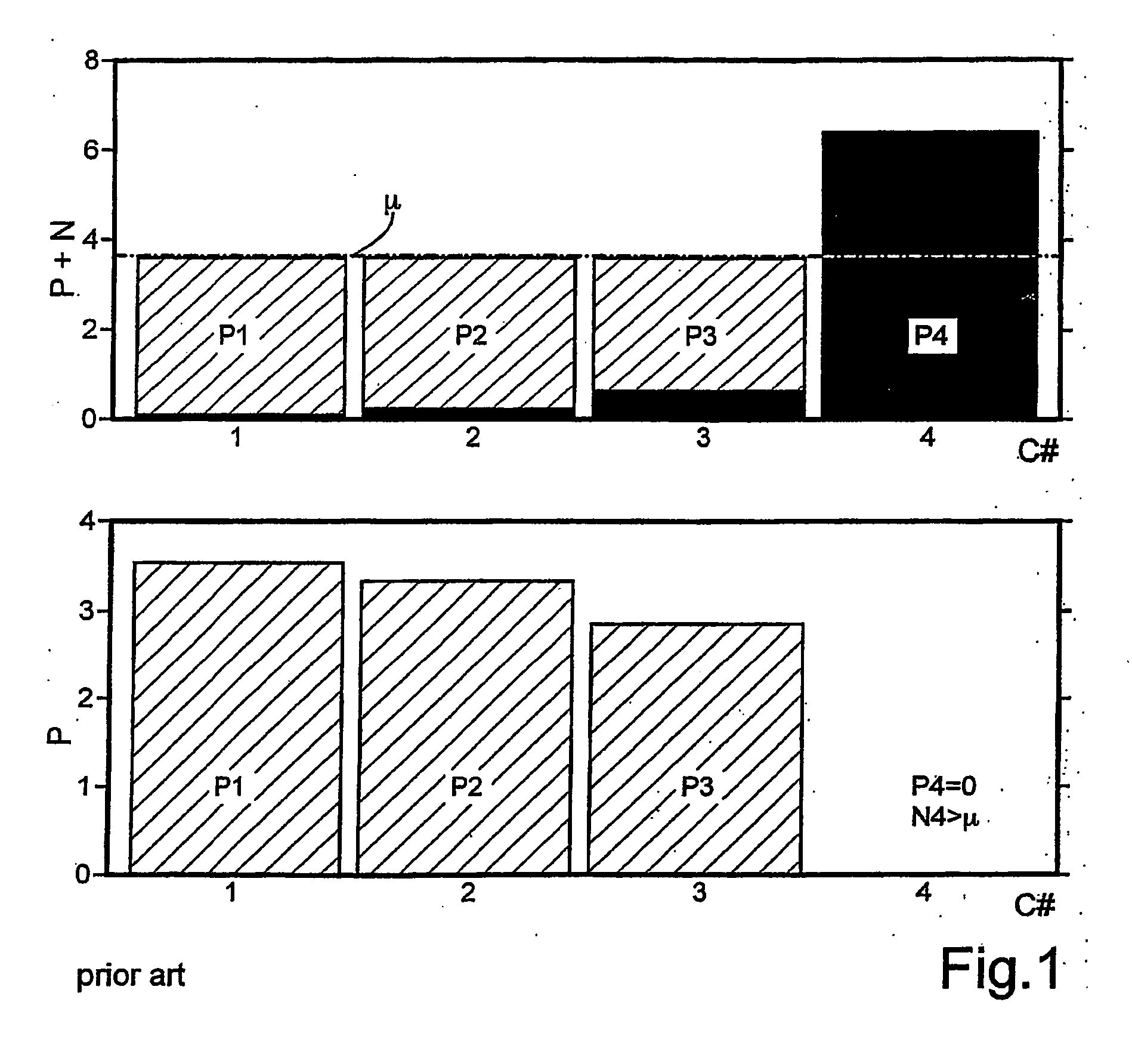[0010] One possible object of the present invention is therefore to specify, proceeding from the basis of the known linear
signal processing method, a modified
signal processing method which guarantees reliable
data transmission that is insensitive to interferences both indoors and outdoors. At the same time the aim is for the required maximum transmit power to be as low and constant as possible. The
signal processing method aims to be low in complexity and therefore realtime-capable.
[0013] Because of the use only of the suitable subchannels there is also no loss of transmit power on poor subchannels. Rather, the maximum transmit power, which can now assume a relatively small value and be kept largely constant, can be optimally distributed over the subchannels used. The selection of the most favorable modulation and coding method also has an influence here on the power distribution. The signal processing method thus represents a rank-
adaptive method for a simple connection scheme in the
transmission channel which guarantees a reliable
data transmission both indoors and outdoors and therefore in any environment—even when singularities occur. At the same time, although the
data rate is variable due to the different occupation of the subchannels over time (a variable
data rate is, however, non-critical for functions outside of a direct voice or video communication), a constantly low transmit power and a very low
bit error rate can nonetheless be guaranteed. Moreover, the connection is not interrupted until the transmit power is no longer sufficient to support even a single
data stream. Thus, the connection can also be maintained over comparatively long distances and in singular channels, i.e. the range is increased.
[0017] The essential approach is that the water-filling principle, and also the principle of adaptive
channel inversion as a simplified suboptimal form thereof, can be implemented directly in the space of the eigenvectors of HHH by a structurally very simple, in particular linear, signal processing if the channel matrix H is known with sufficient precision on the transmit and receive side, in other words more particularly in TDD systems. The
system design is considerably simplified as a result of the transmit-side
channel knowledge and it is possible to get very close to the
capacity limit of the channel using simple transmission methods. The
channel knowledge on both sides permits in particular a simple matching of the
transmission rate to the given channel characteristics, as a result of which, among other things, a
reliable transmission in singular channels with precisely predictable error rates is also made possible. This also considerably simplifies the selection of the appropriate modulation and coding method. In an extended form the statistical fluctuations in the transmit power which normally arise due to the
transmitter-side signal processing can already be calculated in advance. This then enables cheaper amplifiers with high efficiency levels to be used.
[0056] With the suboptimal rank-
adaptive support for all subchannels based on the adaptive
channel inversion principle ACI according to case b), the SNRACIk is the same in all data streams, i.e. the same modulation and coding method can be used in all data streams. In particular the data streams can originate from a commonly coded and modulated source, which greatly simplifies the system design (see FIG. 4). On the other hand a somewhat lower
transmission rate must be accepted as the price for these simplifications. However, the optimum combination of selected modulation and coding method and the number of data streams still remains to be found. Toward that end a table can be created to determine which power for supporting a specific modulation and coding method, common to all data streams, which is characterized by its
spectral efficiency K (data volume transmissible per 1 Hz per second), is required in the AWGN channel without exceeding a specific
bit error rate. Depending on the number of data streams nd the
noise would now increase by the factor ∑i=1nd1λ1. From the comparison with the maximum total power available, a selection is first made, from a table for the required transmit powers as a function of nd and K, of the combinations of nd and K which can be implemented with the maximum transmit power. The combination with the modified highest
spectral efficiency nd·K is then selected from this subset. In this way the
transmission rate is maximized.
 Login to View More
Login to View More  Login to View More
Login to View More 


